The use of chisels dates back several thousands of years. They have been one of the most instrumental and essential tools in human craftsmanship and construction.
In fact, they have been used since ancient civilizations such as the Egyptians, Romans, Greeks, Babylonians and so on, for stonework and woodworking purposes.
A chisel is one of the most common hand tools you’ll find used for a variety of crafts, and it comprises of a handle and a sharp, flat or beveled edge for carving or cutting through materials.
They are available in different sizes and shapes designed to suit different application. The sharp cutting edge of a chisel is usually made of hardened metal in order to maintain its sharpness and durability.
The or body however is made of softer metal to enable it withstand impact and prevent it from breaking or shattering when it’s struck.
Table of Contents
How to Use a Chisel
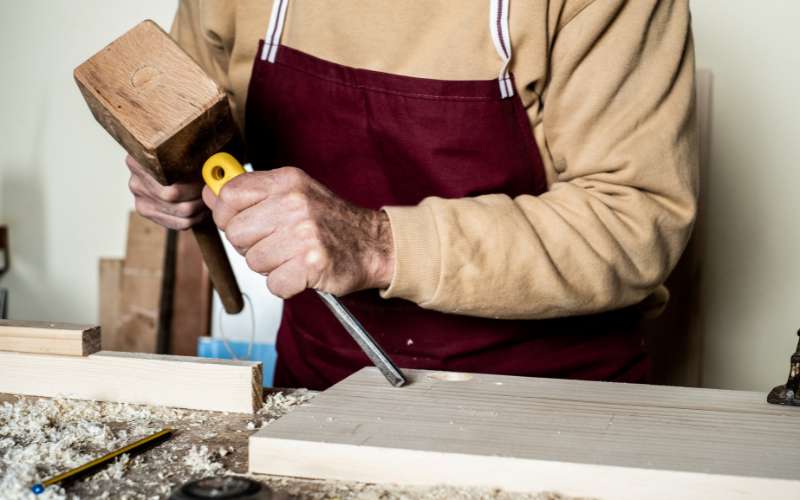
Using a chisel is quite easy and straightforward, but it requires some experience in order to cut and shape materials better with it.
The first thing you need to do is to select the right type of chisel based on the type of material (wood, stone, masonry, metal) you’re working on and the result or outcome you’re going for.
After choosing your chisel, the next step is to wear appropriate safety gear like goggles to prevent chips and debris from getting into your eyes. You also need to wear gloves to protect your hands.
Next, secure the material you’ll be working on using clamps or a vise, in order to stabilize it and prevent any unintended movement while you’re chiseling through it.
After it’s clamped or secured, mark out the area you want to remove or shape using a marking tool of your choice. Mark the specific lines or shape you want to follow to ensure accuracy. Now make a starting point by positioning the chisel anywhere inside your marked area and start chiseling by striking the back of the chisel with a mallet or hammer.
Try not to cut too close to the lines you marked so that you can have room to refine the edges later. When chiseling, you need to hold the chisel slightly at an angle, typically within the range of 20-30 degrees, with the beveled side facing the waste material.
Try not to cut out too much material at once. Use multiple repeat cuts especially when a large part of the material needs to be removed.
Once you’re done removing the bulk of the material, you can use the chisel, a file or sandpaper to refine the edges to your desired shape and smoothness.
Types of Chisels
There are different types of chisels, each designed for different applications. Here are the main types you should know.
Bench Chisels
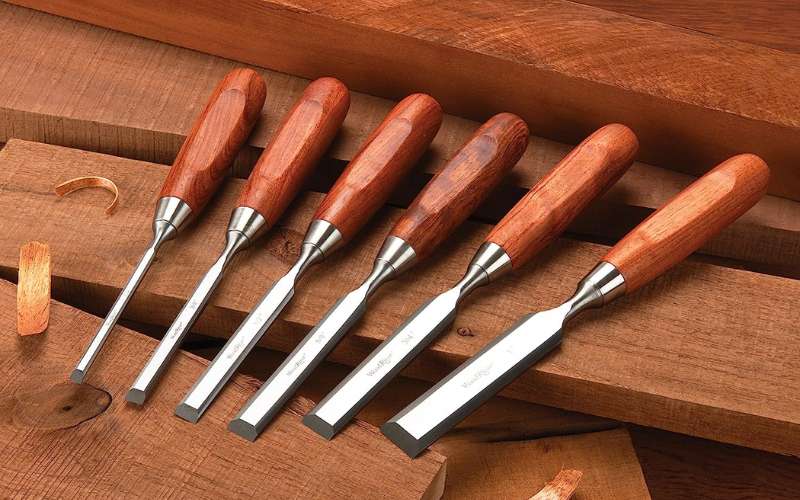
Bench chisels are probably the most basic form of chisels available. They’re designed for woodworking purposes and are meant to be used on a workbench or any other sturdy surface, hence the name Bench chisel.
If you carry out woodworking or carpentry projects, you can use this type of chisels to cut, carve and shape the wood you’re working on.
They typically have a beveled cutting edge made from high quality steel that is hardened and tampered to ensure the cutting edge maintains its sharpness during use.
Bench chisels comes in various sizes, typically from 1/4 inch to 1 inch in width, although you can find sizes smaller or larger than that. The width of the chisel determines what you can do with it. Narrow widths are ideal for delicate work, while wide width chisels are ideal for heavy material removal.
Mortise Chisels
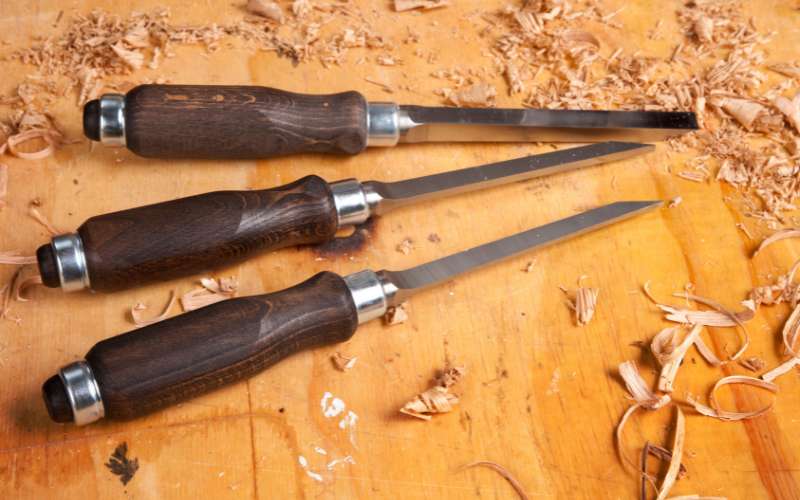
Mortise chisels are specifically designed for cutting mortises for mortise and tenon joints. The blades are usually thicker and wider in order to withstand the force exerted the cutting and levering action required to remove material from the mortise hole.
They’re built to be robust in order to resist repeated hammer blows when cutting the mortises. The handles are also very strong and durable, and are often made from hardwood or other composite materials designed to absorb shock from the hammer or mallet.
Mortise chisels are also available in different sizes, which you can choose from depending on the size of the mortise you’re trying to cut out.
Wood Carving Chisels
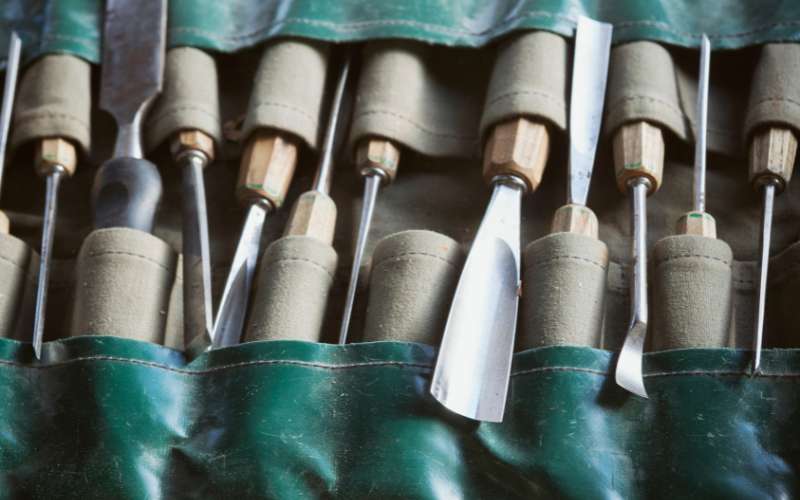
Wood carving chisels are also known as carving gouges and they’re specially designed for removing material from wood in a controlled and precise manner, allowing woodworkers to carve and create intricate designs, sculptures and other decorative elements using wood.
The blades come in different shapes and sizes which allows for controlled and precise cutting, slicing and shaping of the wood, creating different contours, textures and designs.
Some common carving chisels include gouges which are U-shaped, veiners which are V-shaped, fishtails, skew chisels and many other types and shapes.
Paring Chisels
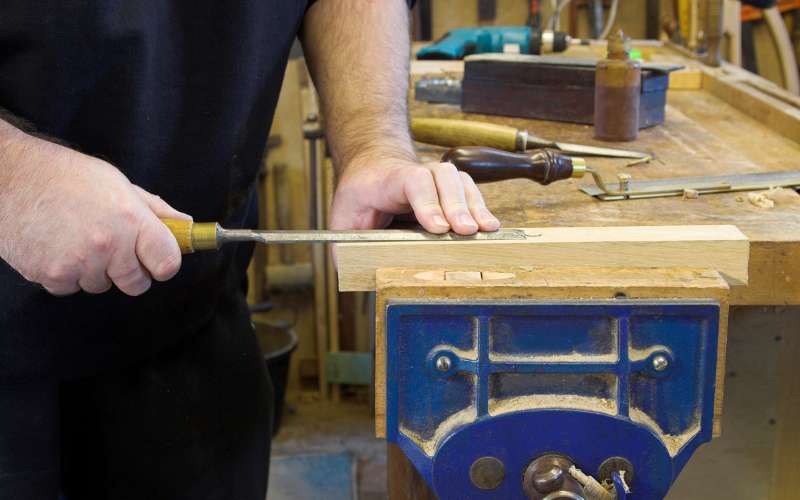
Paring chisels have long thin and beveled blades that are designed for paring, which involves removing thin shavings of material from wood. They’re commonly used for delicate woodworking and carpentry projects and tasks such as when fitting joints together and shaping curves surfaces.
Paring chisels are long and the handles are typically lighter and more delicate, which makes them easier to maneuver during use.
Socket Chisels
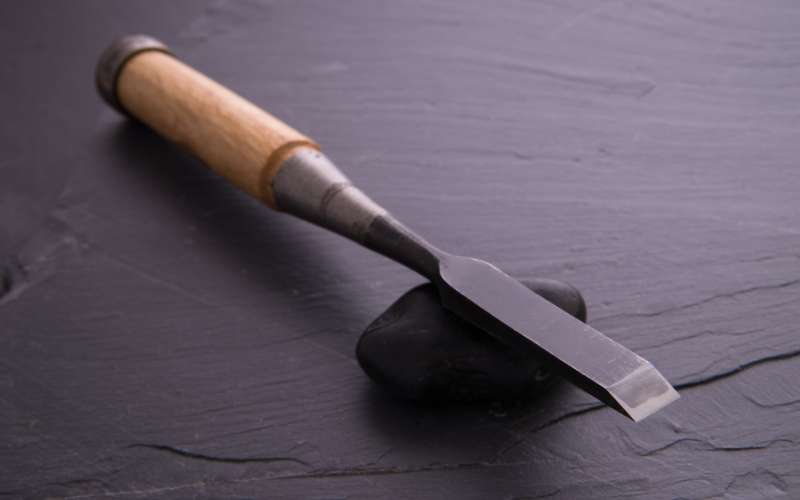
These chisels also known as tang chisels are designed so that their handles can easily be replaced. The handle have a socket-like opening where you can insert the blade.
This socket or opening is usually made of metal such as steel or brass, and is designed to hold the chisel blade firmly in place during use.
Masonry Chisels

Masonry chisels are also known as brick or stone chisels, and they’re specifically designed for masonry work, like cutting and shaping of bricks, stone or concrete.
Their blades are made of hardened steel so they can withstand the tough nature of chiseling through rough materials like stone, concrete or bricks.
The cutting edge may be slightly curved or straight, depending on the type you choose. There are several types you can choose from which include, point chisels which have sharp, pointed tips for breaking or chipping away masonry materials.
Flat chisels for general cutting, shaping and splitting of stones, bricks and concrete materials.
Pitching chisels, which have a wedge-shaped bladed designed for rough shaping or splitting stones.
Toothed stone mason chisel can be used for cutting, shaping and texturing of masonry materials.
It’s very important that you wear appropriate protective equipment and gear like safety goggles and gloves when using masonry chisels, as chiseling through masonry materials can stir up a lot of dust and debris that fly in several directions.
Cape Chisels
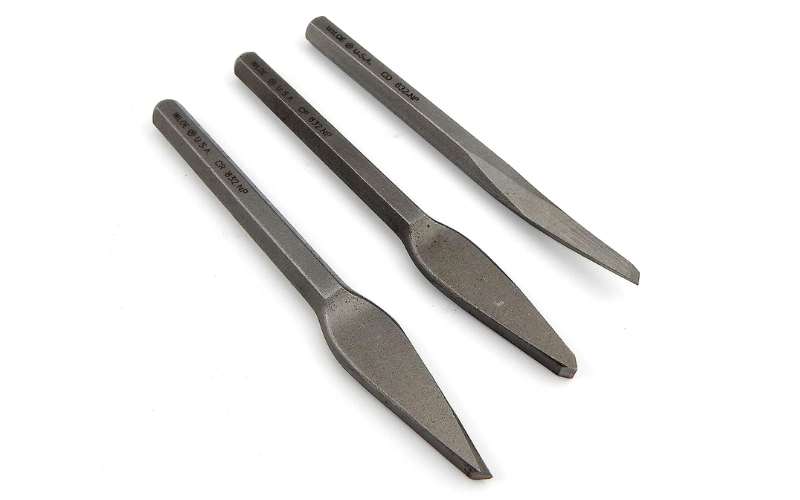
Cape or slot chisels have narrow and pointed blades and are used during metalworking projects for cutting flat grooves for keyways or slots.
Lathe Chisels
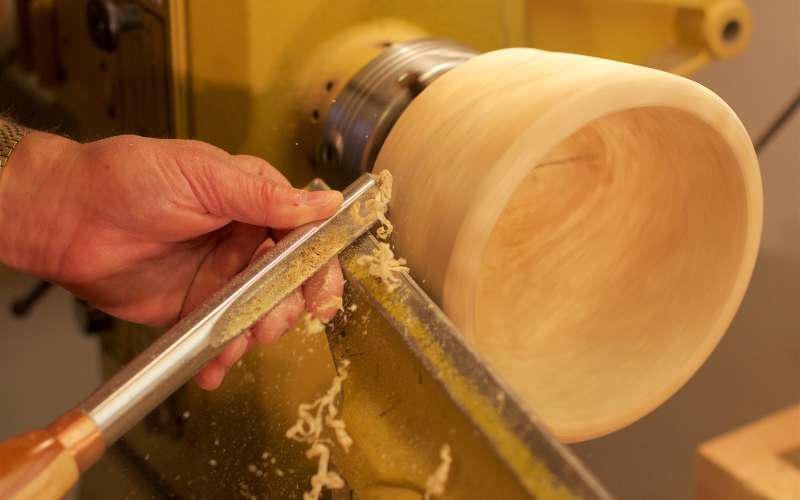
Lathe chisels are designed for woodturning wood on a lathe machine. They’re typically made with high-speed steel blades so that they can withstand the high rotational speeds and friction as they come in contact with the fast spinning wood on the lathe.
Their blades come in different shapes and sizes, each designed for specific woodturning operation. There are different types of lathe chisels. They include:
Gouges:
Gouges have U-shaped or V-shaped cutting edge and they’re designed for removing the out layer of the wood being turned and roughing out the initial shape of the work piece, cutting out the shape and refining the profile. Next are Scrapers.
Scrapers:
Scrapers are lathe chisels with a flat or curved cutting edge, with a square or rounded profile, and they’re primarily used for smoothing the rough profiles, removing tools marks, and creating fine details on the workpiece being turned.
Skew Chisels
Skew lathe chisels have a flat and beveled cutting edge with a pointed tip for creating smoooth finishes, shaping details and achieving a clean finish on the workpiece.
Lathe chisels come with long handles so they can be held comfortably. The long handles provide stability, leverage and control while turning the wood.

